One of the most beautiful sights in the world is a lavender field. The purple flowers sway gently in the breeze, and when you walk through them your clothes are perfumed with their sweet fragrance. For centuries lavender has been used for its scent as well as its medicinal properties, and today we’re going to talk about how to harvest lavender and what you can do with it once harvested! This way you can enjoy it long after the blooms are gone.

Growing lavender is easy and rewarding.
How to grow lavender for fun and profit
How to harvest lavender
Tools you need for harvesting lavender
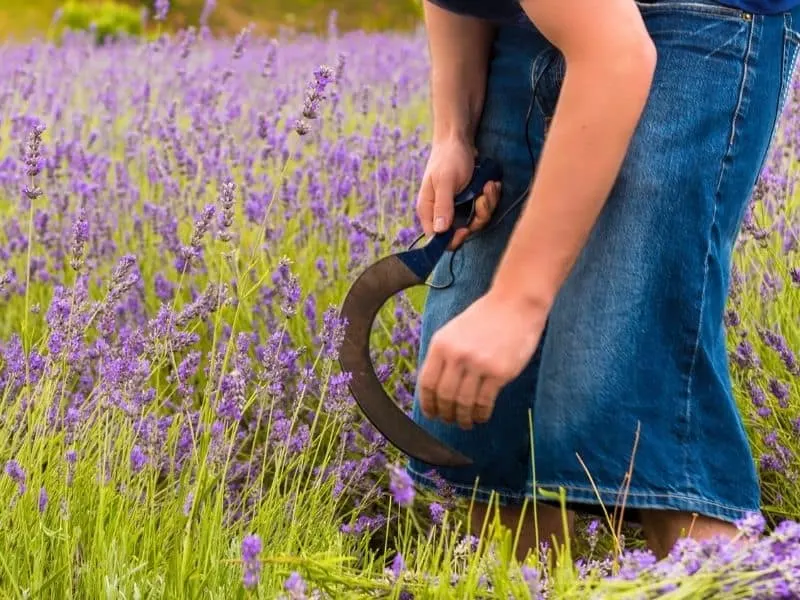
Before you get out in your lavender patch to harvest, you’ll need a few tools. The best cutting tool for lavender is a harvesting knife, but you can also use a sharp pair of scissors if you don’t have a lot to harvest.
You’ll also need a bucket or basket to carry your lavender, and if you intend to dry the lavender bunches, have some rubber bands on hand, so you can do it as you go and not have to go back later.
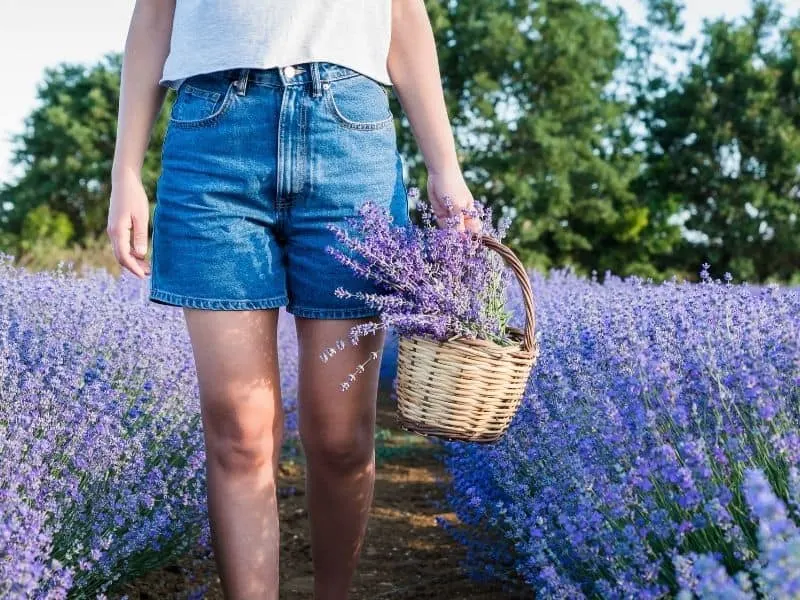
Lavender growing tips
Lavender is an easy plant to care for and is mainly fuss-free if planted in the right climate and conditions. Since it’s a plant from the Mediterranean region, it can grow as a perennial in USDA zones 5 to 9. In colder areas, it will need to be planted as an annual, or in pots that can be moved indoors during the colder months.
Plant lavender in well-draining soil, in a sunny location that gets direct sunlight for at least 6 hours each day. Use the right mulch for lavender, to keep it growing beautifully.
Lavender is an herbaceous perennial which means once established, it doesn’t need much attention. Just enjoy it!
Where to grow lavender
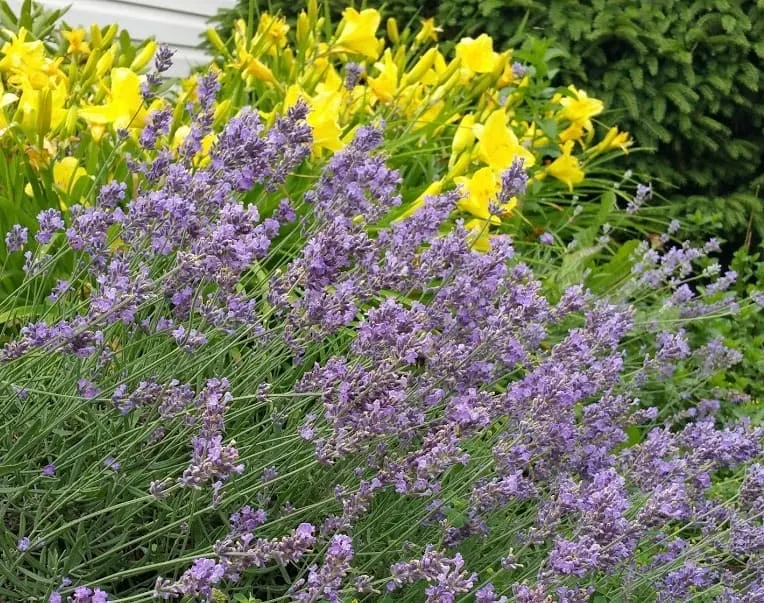
Lavender will do well in both garden beds and in pots, as long as it’s planted in a sunny location and the soil has good drainage. Rock gardens are perfect: add a few species of lavender, so you have varieties that bloom at different times.
Our first house came with a couple of lavender plants at the corner of the house, and it thrived in that location for all 20 years we lived there. We added some other plants to complete the look of that flower bed. Just behind the lavender, we had some yellow daylilies, and close by we planted some pink roses and peonies: a beautiful spring show of colors!
Add a few lavender plants to your herb garden, or in your flower borders. If you don’t have the right environment for growing lavender in your flower beds, you can plant it in pots and add them to the porch, patio, or front door.
Lavender varieties
There are many types of lavender you can choose to plant.
English lavender is the easiest to grow. Some of the most versatile varieties such as ‘Munstead’ and ‘Hidcote’ only require minimal maintenance once established. This type of lavender does well in both hot and cold climates.
The French Lavender is more compact than the English variety with an intense fragrance that’s perfect for culinary use or to make your home smell fresh! It grows two to three feet high and does well when planted in containers on patios.
Spanish lavender has a softer, more delicate scent and is best used for landscaping or as a border. It also does well in containers and is the most drought-tolerant of all lavenders, making it perfect for hot climates!
Tips for harvesting lavender
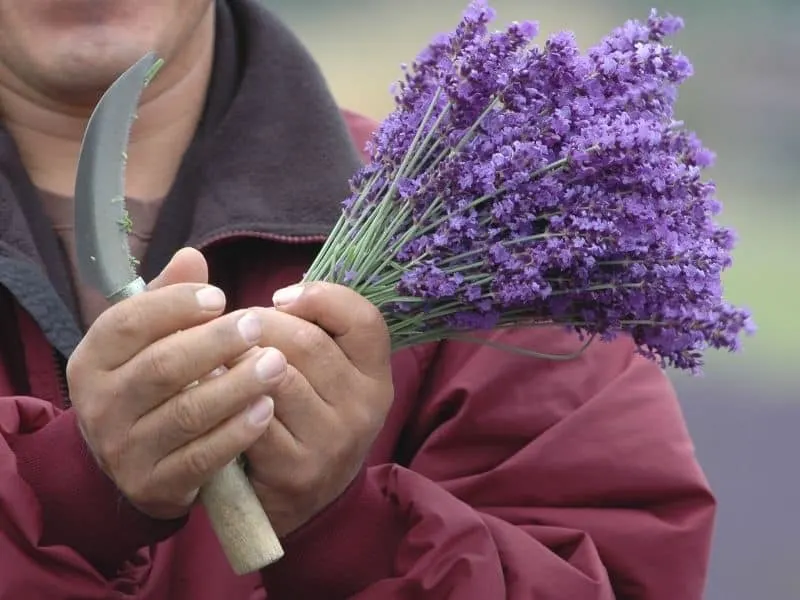
Harvesting and drying lavender is simple – start in the early morning when it’s cool outside and the fragrance and lavender oil concentration is at their peak.
Pick a handful of stems and trim them off above a leaf node or a side branch. Make sure not to cut too deep, or you’ll cut into the stem.
Now depending on why you’re harvesting, you can bundle your cut lavender with twine or rubberband to hang for drying and place bundles directly onto paper towels until ready. This will absorb any excess moisture from inside each flower head while still allowing airflow around all sides which will prevent molding later.
If using your fresh lavender flowers in bouquets immediately after harvesting, place them in a bucket of cool water to keep them fresh.
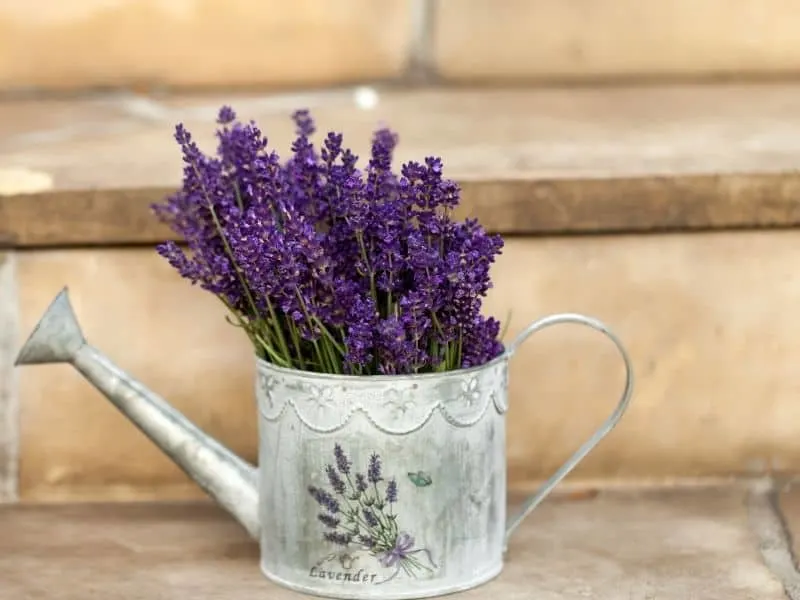
When to harvest lavender
If you’re harvesting lavender for extracting oil, be sure to harvest it early in the morning and before the plant fully blooms: that’s when the oils are strongest in flavor! If you harvest in the heat of the day, the fragrant oils that give lavender its unmistakable smell will evaporate.
The best time to harvest is when half of the flower buds are still closed. Watch out, as not all flowers bloom at the same time, so you want to be careful and let the ones that are not yet ready for a few more days.
Lavenders that have been harvested after flowering will still work but they’ll yield less oil than those picked at their peak time.
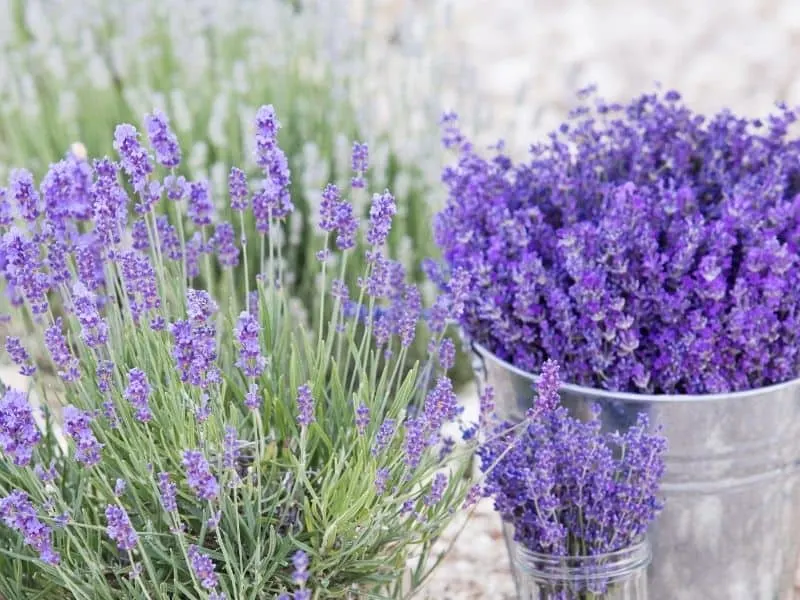
How to prune lavender
To prune lavender plants, wait until after the plant has finished blooming and cut stems from where they are a couple of inches above the ground (about 2/3 of the plant’s height), making sure not to get any of the woody parts, which would damage the plant.
The best time to prune is in early summer after the first full bloom, and then again in late summer after the second bloom some lavenders get. Pruning twice a year will keep your plant healthy and compact.
But, for young plants, it might be a good idea to wait until after the first year to prune, to allow them to get established.
How to dry lavender flowers
After harvesting, hang the lavender bundles in the shade, place the lavender buds in a box lined with newspaper, or dry them with a dehydrator or oven.
The easiest way to dry lavender is to hang the small bunches upside down in a cool shaded spot with good air circulation.
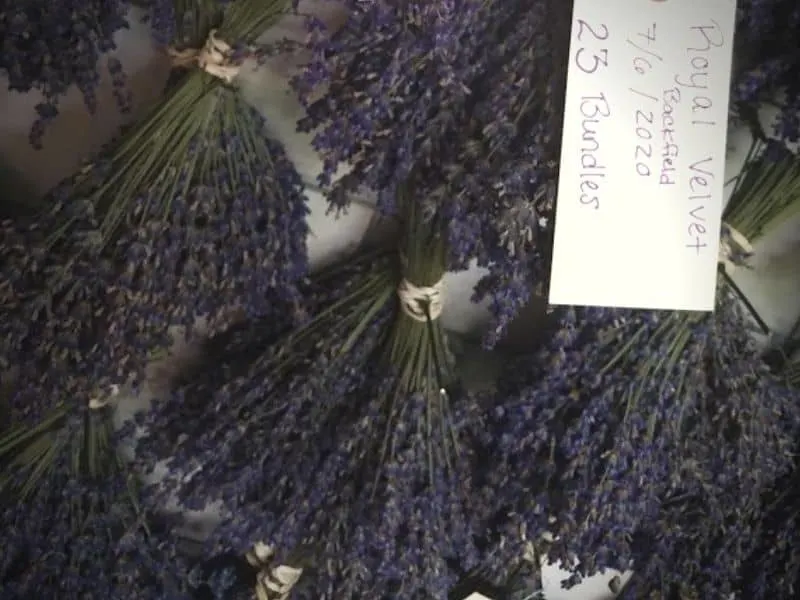
If you don’t have room for that, you can dry lavender blooms in the dehydrator, after removing the stems. A bit more work, but faster drying which takes less space.
How to store dried lavender
Store only when completely dry
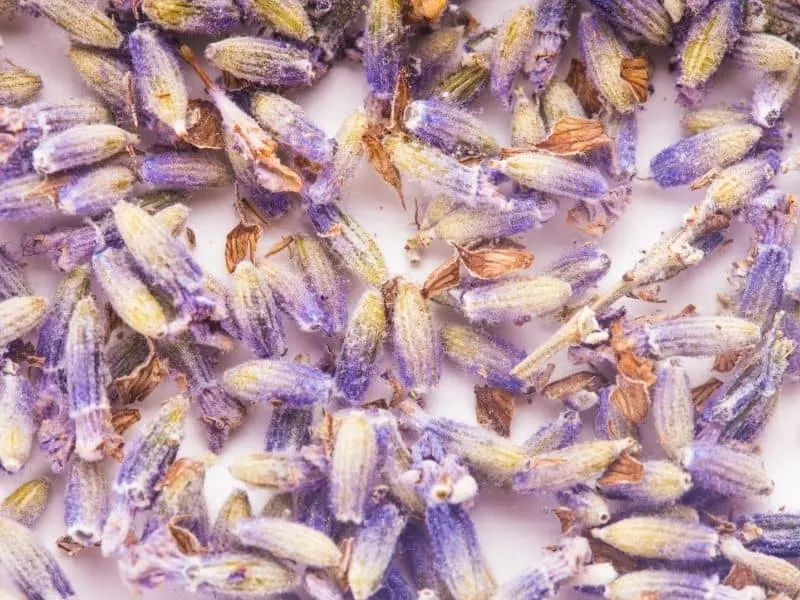
Wait for the lavender to completely dry because even a small dose of humidity will cause mold.
Carefully separate the blooms from the stalk
Before you store them, remove the blooms from the stalk carefully. You can do this by lightly rubbing a dried lavender stalk in between your hands. You can discard the stalk, or use it as a fire starter with calming benefits.
Use an airtight container
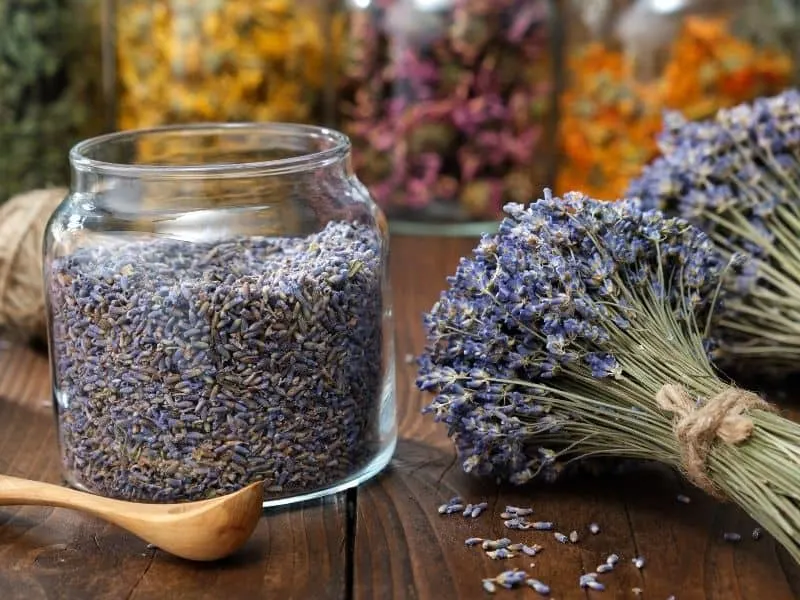
Some people store their dried lavender in ziplock bags, but it’s much better to use a glass jar (Mason jars are great and come in many sizes) that closes tightly.
Store dried lavender in a cool dark place
Exposure to light can cause discoloration and decay faster. So, in order to keep the lavender’s color, you should store it in a dark drawer or cabinet, or use a colored glass jar.
Place dried lavender in low-humidity storage
High humidity can cause mold and completely ruin dried lavender, so make sure to store it in a dry, low-humidity place.
How to use dry lavender
There are so many ways to use your dried lavender! Here are just a few:
- make dry flower arrangements for your home
- add it to homemade soap
- make infused oil (if you dried culinary lavender)
- make a dream pillow (you can use just lavender, or mix it with other relaxing herbs such as chamomile)
- make lavender sachets for your drawers
Did you make some of these crafts and would like to sell them? Here’s how to market your lavender products.
I hope you learned a bit about how to grow lavender and what to do with it. Enjoy the delicious lavender smell.
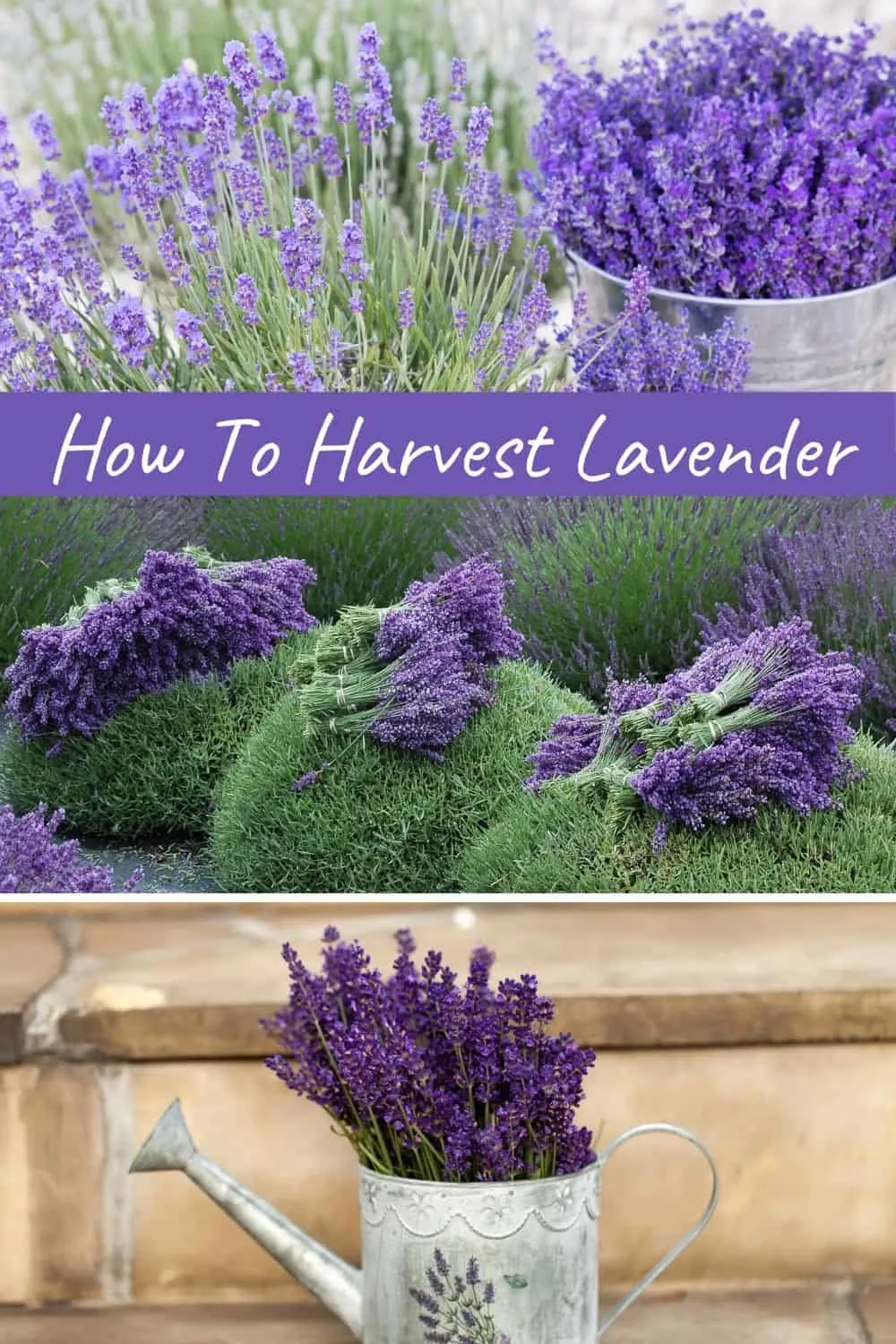
Adriana Copaceanu is a passionate nature lover living in the country on her dream property where she grows vegetables, lavender, and wildflowers that she shares with the wildlife they attract. When she's not in the garden, she loves spending time with her chickens and planning her next nature project. Check out her books below:
How to Grow Lavender for Fun and Profit: Lessons Learned from Planting Three Hundred Lavender Plants


How To Prune Lavender: Tips For Healthy And Attractive Growth
Sunday 16th of April 2023
[…] how to harvest lavender […]
How To Dry Lavender - 3 Steps (Plus What To Do With It!)
Wednesday 4th of January 2023
[…] might seem obvious, but you first have to harvest the lavender. The manner in which you do so can make more or less work later in the process. First, cut as low […]
Beautiful Flower Garden Ideas
Saturday 25th of September 2021
[…] How To Harvest Lavender And 5 Ways To Use It […]
Paula
Monday 2nd of August 2021
Where can I order Lavender plants or seeds my garden stores do not have any…
Chuey
Friday 16th of June 2023
@Paula, ANNIE'S ANNUALS, Richmond CA!! (I'm lucky enough to shop there in person♡.) She has a vast number of plants, not just Lavender, which is not an annual here in the Bay Area. She ships all over, and I think Martha had her on the Show a couple times. Her plant descriptions/cultivation notes leave nothing to guesswork. You can find her store online. Good Luck♡♡♡ PS Walmart sells seeds including Lavender, if there's one near you. Most bloom first year, but start early indoors.
Debbie Johnson
Sunday 5th of September 2021
@Paula, In the spring, look for it where the herbs are such as oregano and basil. A small english lavender in a 2 inch pot will grow very quickly.
Adriana
Monday 2nd of August 2021
You can order seeds from Amazon (these are very popular). Just be aware that lavender grown from seeds is not always true to what the package says. Garden stores will have lavender in the spring, so keep an eye out for them then.
How To Grow Lavender Plants In Your Garden Or In Containers
Sunday 4th of April 2021
[…] Learn how to harvest lavender wand what to do with it. […]